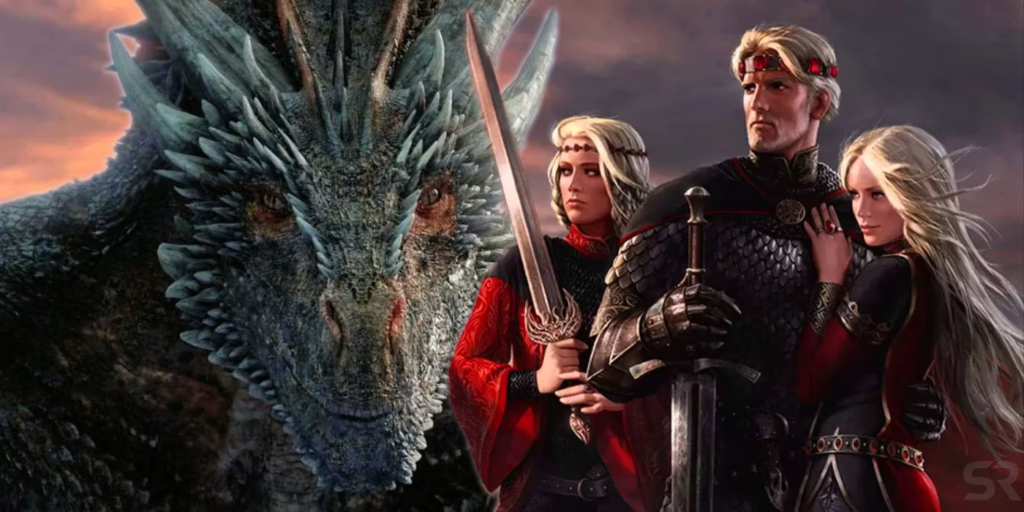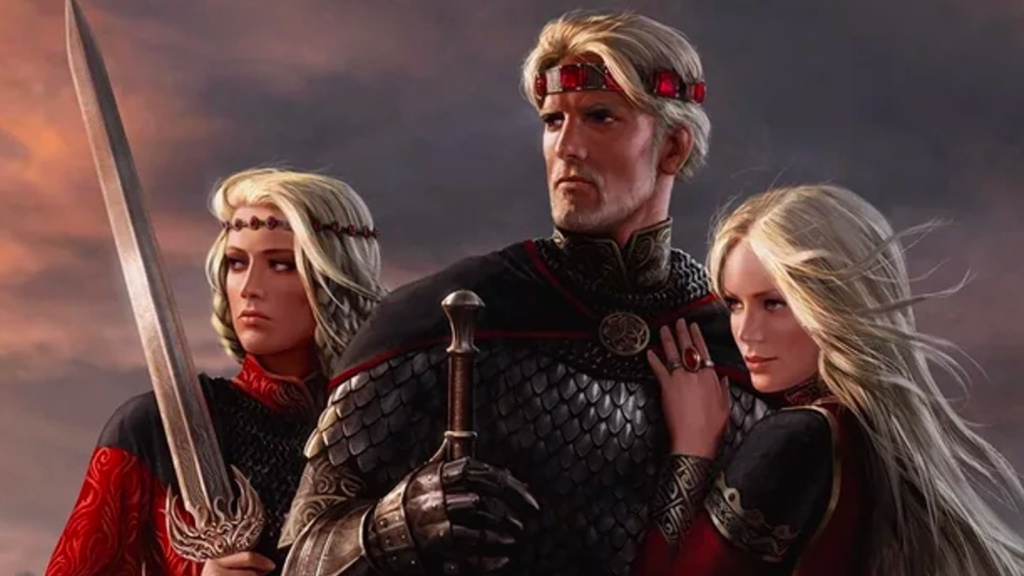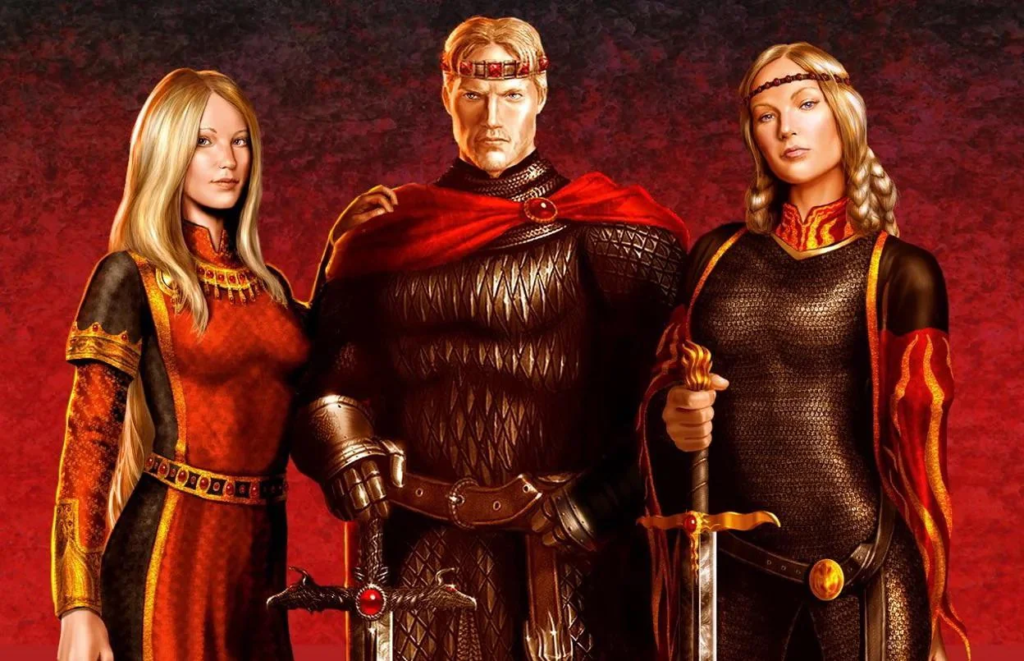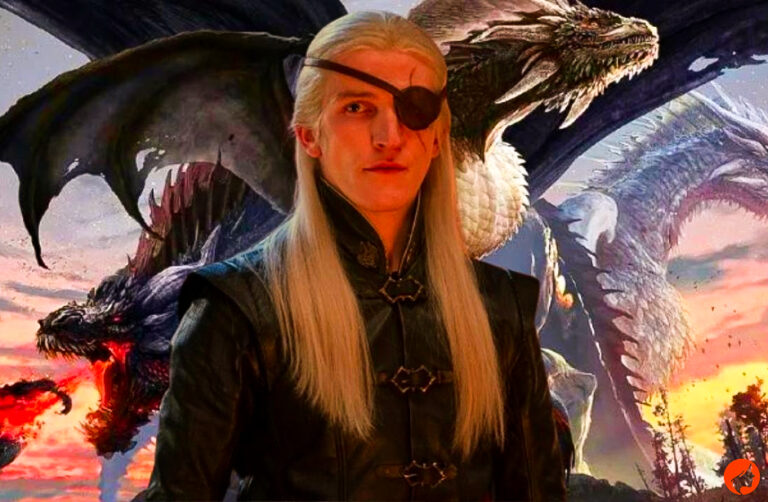In the rich, fiery lore of Westeros, few names inspire as much awe and terror as that of Vhagar, the largest and most powerful dragon in the history of the Seven Kingdoms. A creature born in the age of dragons, Vhagar’s existence shaped wars, determined dynasties, and solidified the Targaryen legacy as one of dominance and fire. To understand Vhagar is to delve into the complex world of dragonriders, family feuds, and the role of dragons in the Targaryen conquest. Let’s explore the awe-inspiring Vhagar dragon, uncover its historical significance, and take a closer look at why it remains one of the most feared creatures in the annals of Westeros’ history.
The Origins of Vhagar: Born in the Age of Conquest
Vhagar was born during the early days of the Targaryen presence in Westeros, under the reign of Aegon the Conqueror. Named after a deity of old Valyria, Vhagar was one of the three legendary dragons used during Aegon’s conquest of Westeros. The other two were Balerion the Black Dread and Meraxes, but Vhagar’s significance lies not only in her size but in the duration of her life. By the time of her death, Vhagar had outlived both of her counterparts, becoming the largest and most powerful dragon still alive.
Initially ridden by Visenya Targaryen, Aegon’s sister-wife, Vhagar played a crucial role in establishing the Targaryen dynasty’s dominance over the Seven Kingdoms. Together, Visenya and Vhagar scorched the fields of those who opposed Targaryen rule and destroyed castles that would not submit. Vhagar’s fire and fury were instrumental in shaping Westeros as we know it today.

Vhagar’s Power and Fearsome Abilities
While dragons in the world of Westeros were symbols of power and destruction, Vhagar stood out even among these magnificent beasts. By the end of her life, she was large enough to swallow horses whole, and her fiery breath could melt stone. The sheer size and strength of Vhagar made her a weapon of mass destruction in any conflict she was involved in.
Vhagar’s fire was said to be so hot that it could turn sand to glass. This power was demonstrated on numerous occasions, from burning castles to obliterating armies. Additionally, her immense size made her a terrifying presence in the sky, casting shadows that heralded doom for those beneath her.
One of the most remarkable aspects of Vhagar was her longevity. Dragons tend to grow larger with age, and Vhagar, having lived for over a century, grew to a size rivaled only by Balerion. Her strength in battle was unmatched, and the terror she inspired in enemies was a decisive factor in the numerous Targaryen victories she participated in.
A Targaryen Icon: Riders of Vhagar
Throughout her long life, Vhagar had multiple riders, each playing a pivotal role in Targaryen history. Her first rider, Visenya Targaryen, was not only a fierce warrior herself but also one of the architects of Targaryen power. Visenya used Vhagar’s might to instill fear in any who defied Aegon’s rule, cementing the dragon’s legacy as a symbol of conquest.
After Visenya’s death, Vhagar went without a rider for some time, but her importance resurfaced during the Dance of the Dragons, a bloody Targaryen civil war that erupted over the line of succession. Vhagar became the mount of Prince Aemond Targaryen, one of the key figures in this conflict. Aemond, a brash and ambitious prince, found in Vhagar the ultimate weapon to enforce his claim to the Iron Throne. The pairing of Aemond and Vhagar was a formidable one, as the prince’s daring matched the dragon’s destructive power.
The Dance of the Dragons saw Vhagar unleash her full fury, participating in several key battles. One of the most memorable confrontations was the Battle Above God’s Eye, where Vhagar fought against the dragon Caraxes, ridden by Daemon Targaryen. This battle between dragons in the skies was a dramatic and deadly clash, resulting in both dragons and their riders plummeting to their deaths. Vhagar’s final flight during this battle marked the end of an era for the Targaryens, signaling the decline of their once unchallenged dominance in Westeros.
The Role of Vhagar in Shaping Westeros’ Political Landscape
Vhagar’s importance goes far beyond her sheer size and strength. Her presence shaped the political landscape of Westeros for generations. Dragons were the ultimate symbol of power for House Targaryen, and Vhagar was the mightiest of them all for much of her life. The existence of dragons like Vhagar allowed the Targaryens to conquer and hold the Seven Kingdoms through fear and force.
Vhagar’s involvement in the Dance of the Dragons also had long-lasting repercussions. The Targaryen civil war tore the realm apart, pitting family members against each other, and Vhagar’s destruction played a key role in this chaos. Her death, along with the demise of other dragons during the Dance, signaled the beginning of the end of dragonkind in Westeros. Without dragons, the Targaryen stranglehold on power weakened, leading to future rebellions and challenges to their rule.

Moreover, Vhagar’s reputation endured in the stories and legends passed down through the generations. Her legacy as one of the three original dragons of the Targaryen conquest, along with her terrifying role in the Dance of the Dragons, has ensured her place in Westerosi history as a creature of legend and myth.
Legacy of Fire and Destruction: Vhagar’s Impact on Westeros
Vhagar’s death did not mark the end of her influence. Her legacy lived on in the collective memory of Westeros, becoming a symbol of both Targaryen dominance and the destructive power of dragons. For generations after her death, people spoke of Vhagar with a mixture of awe and fear.
Her role in shaping the political landscape of Westeros cannot be overstated. Vhagar’s involvement in the Targaryen conquest helped unify the Seven Kingdoms under one rule. The dragon’s role in the Dance of the Dragons, however, contributed to the fracturing of this unity. The civil war not only decimated House Targaryen’s strength but also reduced the number of dragons, leading to their eventual extinction.
In the years following her death, Westeros would become a land without dragons, but the memory of Vhagar and her kin lived on. While dragons were gone, their stories became woven into the history and mythology of the land. Vhagar, in particular, remained a figure of fascination due to her immense size, power, and the crucial role she played in shaping the course of Targaryen history.
Vhagar’s Return to Popular Culture: House of the Dragon

With the rise of House of the Dragon, the prequel series to Game of Thrones, Vhagar has returned to the forefront of popular culture. This series delves into the events of the Dance of the Dragons, bringing Vhagar and her dramatic final battles to life on screen. Fans of the show have been eager to witness the depiction of this legendary dragon and the ferocious battles she partakes in during this pivotal moment in Targaryen history.
By reintroducing Vhagar to a modern audience, House of the Dragon has rekindled interest in the Targaryen dynasty and the role of dragons in shaping Westeros. The portrayal of Vhagar as an ancient, battle-hardened dragon reflects the weight of her storied history, as well as the destructive force she represents.
Conclusion
The tale of Vhagar is one of fire, fury, and legacy. As one of the most powerful and longest-living dragons in Westeros, Vhagar played a pivotal role in the Targaryen conquest, the rise of their empire, and the ultimate downfall of dragonkind. Whether she was scorching enemies on the battlefield or participating in dragon-on-dragon combat during the Dance of the Dragons, Vhagar’s influence on the history of Westeros cannot be overstated.
As the world of Westeros continues to expand in modern culture, the legend of Vhagar endures. Her fiery breath and colossal presence remain one of the most iconic symbols of Targaryen power, forever etched into the fabric of Westerosi lore.
FAQs
1. Who were Vhagar’s riders, and how did they influence Westeros?
Vhagar had several notable riders throughout her long life, including Visenya Targaryen and Prince Aemond Targaryen. Visenya used Vhagar to help conquer Westeros alongside her brother Aegon, solidifying Targaryen rule. Aemond, a key player in the Dance of the Dragons, used Vhagar in several battles during the Targaryen civil war. Both riders utilized Vhagar’s immense power to alter the political landscape of Westeros.
2. How did Vhagar’s size and power compare to other dragons in Westeros?
By the end of her life, Vhagar was one of the largest and most powerful dragons in Westerosi history, second only to Balerion the Black Dread. Her immense size allowed her to swallow entire horses and unleash fiery breath hot enough to melt stone. Vhagar’s strength and size made her a devastating force in battle, feared throughout the Seven Kingdoms.
3. What role did Vhagar play in the Dance of the Dragons?
Vhagar played a significant role in the Dance of the Dragons, the Targaryen civil war over succession. Ridden by Prince Aemond Targaryen, she fought in key battles, including the infamous Battle Above God’s Eye, where she met her end in a dramatic aerial clash with Daemon Targaryen’s dragon, Caraxes. Vhagar’s involvement in the war symbolized the destructive power of dragons and the tragic consequences of the Targaryen civil conflict.
